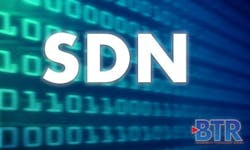Great SDN Expectations
For many in the cable industry, the software defined network (SDN) continues to evade a precise definition, only to be further complicated when understanding its relationship to network functions virtualization (NFV). In a similar parallel to Dickens' character Pip in "Great Expectations" (a young boy who grows into an English gentleman after overcoming many challenges), SDN has matured from early academic work to the current day applications in cloud, enterprise, and service provider network and computing domains.
What are the applications of SDN that are meaningful to cable operators?
For many operators, the ongoing challenge is servicing subscriber density and profitable bandwidth growth. This means that the service group, which is the number of subscribers serviced within a resource domain, is shrinking. When the service group is delivered to fewer subscribers, more bandwidth is naturally available for each attached modem, narrowing the service group to subscriber ratio.
As the ratio decreases, the number of physical ports in the network increases. For some operators, this increase in service group port density may occur faster than the expected two to two-and-a-half year doubling of silicon density. Further, at some point connector limits will become a restriction in service group-to-rack-unit space within an operator hub.
From these realities, a distributed architecture for "remote" CCAP systems has emerged. For those seeking to move the resource domain out to the access plant, SDN finds itself a natural home.
When forwarding decisions are placed into the edge of the network, rather than in the hub-based chassis, the industry echoes what the SDN design paradigm enables.
An SDN-based switch is effectively the separation of control from the data plane. This is the same separation that occurs when data plane-serving line cards of a CCAP chassis are placed into remote nodes separating them from their supervisory and routing feature modules in the hub chassis.
When an operator adds SDN to the network, the operator is deploying a software controller with application logic and network elements capable of being remotely managed. The remote management occurs over a network protocol that abstracts the underlying switching operations from the actual configuration logic. The definition of OpenFlow as one such protocol has taken hold as a dominant choice to enable such separation.
Decisions on traffic forwarding can now be expressed to the network elements from a software control layer facilitating distribution of this logic through the network. For unknown traffic, network elements may request direction from their controller(s). All of this separation allows for a hierarchy of intelligence that enables a real end-to-end realization of a subscriber and their network services.
Chris Busch is the chief innovation officer for Incognito Software Systems.
